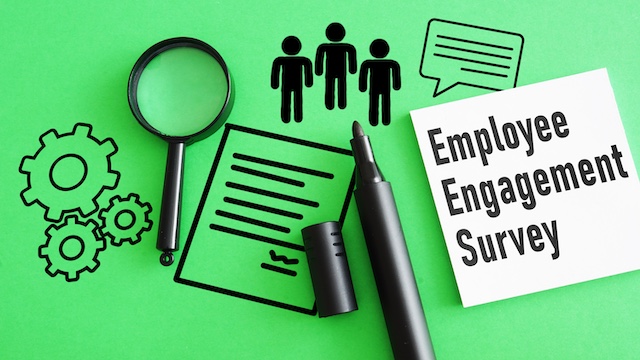For two companies to merge, leaders of both organizations have to put tremendous effort into orchestrating the details of the deal. But the work doesn’t stop once the agreement is signed. In fact, the most important work comes afterwards, in what is known as post-merger integration.
What Is a Post-Merger Integration?
Post-merger integration (PMI) is the nuanced process that takes place after two large companies agree to combine their resources and begin operating as one entity. For example, the new company may need to eliminate redundant or competing positions or reorganize teams. For many organizations, the post-merger integration is often complex. After all, you are renovating the fundamental operating structures of both businesses to suit the new goals of the larger organization.
As an HR professional, you will likely need to take a key role in the integration, reorganization, or displacement of entire departments, as well as conducting layoffs and redistributing responsibilities to newly-formed units. What is post-merger integration going to require from you and your team?
How to Structure Your Team After a Merger
Roughly a quarter of all proposed mergers underperform or fail because there is no clear conception of the fully integrated company. What is post-merger integration but a chance to set your company up for success? Post-merger integration succeeds when it is building toward a shared vision. Much as a contractor can’t supply the necessary materials to build a house without clearly drawn blueprints, a PMI team requires a step-by-step process that takes into account the complexity and function of the final corporate structure. As an HR professional, you should take guidance from the PMI’s steering committee so you can be sure that your specific actions align with this larger plan. Select integration team members based on how quickly and effectively they can communicate with others while keeping the goals of the merger and acquisition process in mind.
It’s helpful to understand what kind of post-merger integration your company is undertaking. What is post-merger integration likely to look like when the merger was driven by a desire to combine costs versus the need to reach new markets? Once you know the answer to this question, the easier it will be for you to choose suitable team members and help implement changes.
Strategies for Different Types of Post-Merger Integrations
Let’s say your PMI is based on opening up new markets. In that case, the post-merger integration should encourage the market-friendly company to continue its operations without undue micromanagement.
 Imagine that you work for a large social media company that has just acquired the maker of a small but popular app. The goal is to preserve the app maker’s innovative employee processes so that the new company can enjoy access to new markets. However, the employees will eventually need to adopt new HR practices without feeling pressured. What is post-merger integration like in this scenario? The smoothest solution is to agree on a gradual phase-in plan that makes the employees at the app maker feel valued in their current roles but also emphasizes that they are part of a new organization.
Imagine that you work for a large social media company that has just acquired the maker of a small but popular app. The goal is to preserve the app maker’s innovative employee processes so that the new company can enjoy access to new markets. However, the employees will eventually need to adopt new HR practices without feeling pressured. What is post-merger integration like in this scenario? The smoothest solution is to agree on a gradual phase-in plan that makes the employees at the app maker feel valued in their current roles but also emphasizes that they are part of a new organization.
Holding a large conference to broadly explain new policies, including expected staff additions or transitions, is a great way to introduce the concepts to the wider company without stressing anyone out. Team members should make themselves available on a rolling basis for smaller one-on-one conferences with employees who have any additional questions. The best policy is to be friendly, open, and informed.
In a cost-reduction-based PMI, however, the more quickly that cross-company redundancies can be eliminated, the better. What is post-merger integration going to look like here? Simply put, you and your team need to take a more aggressive approach. Once the agreed-upon staff reductions or re-assignments are ready, schedule meetings in as tight a timeframe as you can. While no one enjoys the offboarding process, clear and rapid communication will make managing layoffs as painless as possible. Delaying the meetings will introduce feelings of anxiety and confusion within the larger company. If an entire department is being eliminated, it’s best to schedule a large conference to make the initial announcement and then conduct exit interviews with each employee afterwards.
However, haste can make waste; while speed is crucial in reducing expenses in this type of PMI, never schedule a meeting with a staff member until you are fully versed on their position and exit options. Employees can adapt to being laid off or reassigned during the post-acquisition process if they are treated with respect. Employees who are laid off without a clear explanation of the resources available to them will harbor resentment and potentially cause more problems for the company later on. What is post-merger integration if not an opportunity to create the best possible team moving forward?
5 Steps For a Successful Post-Merger Integration
To ensure a smooth post-merger integration, you should follow these five steps:
1. Prepare for the integration
The best time to start a post-merger integration is right after the deal is announced. This is because the longer you wait, the more disruption you can cause to the business. So, start early and move quickly. You should actually start the integration before the deal is officially announced if it is possible.
When you begin your post-merger integration, there are several key issues that you need to prioritize. The first is creating a vision statement that explains the purpose of the deal and how it will help your company to reach its goals. The second is deciding whether or not to hire an external consulting firm to assist in developing and executing your integration plan. Finally, the third is to identify pre-close considerations that you need to focus on. These can include management structure, financial operations, intellectual property, insurance coverage, tax matters, sales and operational processes, and more.
 2. Choose team members for the integration
2. Choose team members for the integration
Adding the right team members to the integration team is crucial for success. You should select team members from both companies and prioritize employees who are highly skilled and who will be a good fit for this role. Select department leaders, senior managers, and employees who have good organizational and communication skills and who know their departments inside and out. Keep in mind that post-merger integrations are extremely large, stressful, and tedious projects. Therefore, you should choose team members who you think are capable of handling the stress. However, you should still watch out for burnout and fatigue.
Add enough team members to handle the workload. Also, before assigning them, determine what their roles will be with the company post-integration, whether they will retain their current positions or move into different ones. If possible, tell them your plans for their future at the company at the beginning of the process. If you can’t, then tell them as soon as you can during the integration process. Having positive future plans for team members can help to keep them motivated and focused throughout the process.
3. Plan the organizational structure of the integration
Create an integration structure that is comprised of different functional areas, such as human resources, finance, marketing, information technology, accounting, etc. All of the departments most affected by the merger should be included in this structure. Ensure that there is a clear plan for how every single key department is going to be integrated. The plan can include which existing projects will continue post-integration, which ones will be abandoned, individual team members’ new responsibilities, where each department will be located, what the budgets will be, etc. Strive to eliminate ambiguity, as clarity will create a more seamless integration.
4. Create an internal communication strategy
Effective communication is absolutely crucial for ensuring your post-merger integration goes smoothly. You will need to create a sound layoff communication strategy that explains employee expectations and roles, corporate culture, management hierarchies, communication tools, etc. Keep in mind that employees from both the companies need to fully understand the overall communication strategy. Keep your messaging clear and consistent. The better that your company’s leaders can communicate with employees and vice versa, the more efficient that your company will be. Oftentimes, when post-merger integrations fail or do not go smoothly, it is because of gaps in communication or lack of clarity.
5. Establish criteria for the completion of the integration
Post-merger integrations are not supposed to go on indefinitely. So, you need to set up clear criteria for the completion of the integration. This will let everyone involved with the integration know what needs to be accomplished to finish the integration and a timeline for completion. Considering that a post-merger integration can involve many different business operations, you should get input from each area involved with the integration, including sales, operations, marketing, legal, accounting, finance, HR, etc. Allow the leaders of your integration teams to contribute to the criteria for the completion of the integration. This will help to ensure that everyone is on the same page about what needs to be done to finish the integration.
3 Common Problems During Post-Merger Integrations
Sometimes, problems occur during post-merger integrations that can complicate the process. Three of the most common problems that frequently show up during post-merger integrations are:
1. Slow integration process
Integrations have to be done methodically to ensure that they are done correctly. However, some companies move through the process too slowly. When integration processes are too slow, they can create a variety of other issues. For example, stalling the business for operational changes can lead the company to lose ground to competitors or to miss opportunities.
2. Lack of planning
Unfortunately, some companies do not plan enough for their post-merger integrations. As a result, the two companies might not work well together when they are joined. There can be communication issues, a lack of compatibility with workplace culture, operational challenges that go unresolved, etc. Ample strategic planning is required to ensure that post-merger integrations go off without a hitch.
3. Poor organization
Even if a company does create a solid integration plan, there will still be major problems if there is poor organization. Companies may have thousands of employees, dozens of departments, and hundreds of products that they offer. As a result, great care has to be taken to make sure that the organization is well-led throughout the process by competent managers and leaders who are in charge of all key aspects of the integration. If not, then the integration will suffer and will not go as smoothly as possible.
Keep Employees Happy After a Post-Merger Integration
The degree to which a successful PMI hinges on thorough and sustained communication may be surprising. A company thrives when each member is in step with the organization’s larger goals. The more employees are made to feel that they are an important part of the post-merger integration, the likelier the process is to succeed.
If your PMI results in layoffs, INTOO can help by providing outplacement solutions with expert career coaching and job seeker tools for those exiting your organization. And for those employees remaining, INTOO’s career development solution can provide customized assistance to meet their needs. Experienced career coaches can help guide employees at any job level boost performance, create strategies for career advancement and feel secure in their roles. Contact us today to learn more.


 2. Choose team members for the integration
2. Choose team members for the integration








